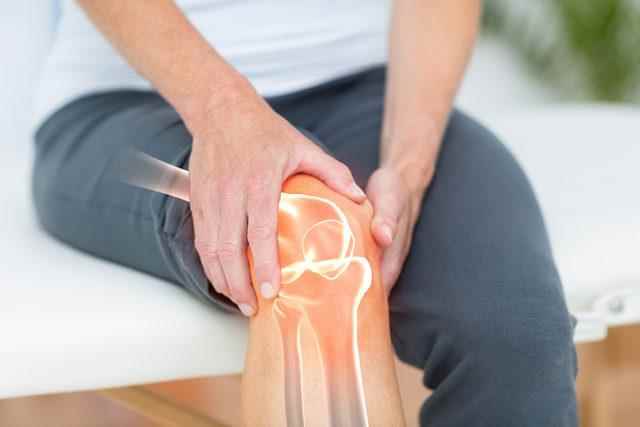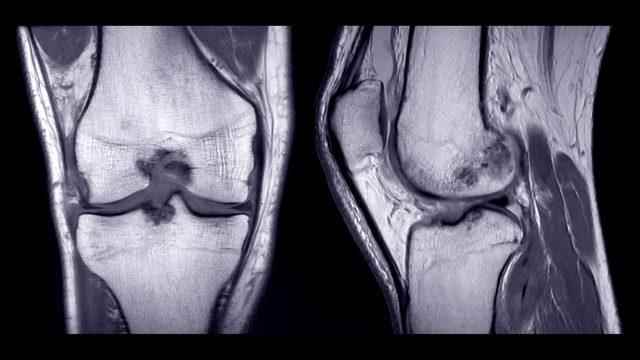Joint diseases, which are all called “calcification” among the people, are not caused by the accumulation, increase or thickening of something, as this name suggests at the first moment, but on the contrary, its decrease and deterioration.
What is fluid loss in the knee?
In order to understand what expressions such as “knee fluid reduction” or “knee hit” mean that we hear a lot, we need to know what the structure of the knee joint is.
The mechanism where two bones meet is called a joint. A joint is also a bone, but unlike other bones, its ends are covered with soft tissue called cartilage. Healthy articular cartilage is brightly colored and slippery. This lubricity is provided by the fluid secreted by the synovial membrane surrounding the joint. The synovial membrane surrounding the knee joint is the largest and most complex of the other synovial membranes in the body. The synovial fluid secreted by this membrane allows the bones to move on the joint without eroding each other.
The main substance that gives lubricity to the synovial fluid is hyaluronic acid, which is found in all connective tissues of the body. Hyaluronic acid molecules, which have a very high water retention feature, either alone or by binding to other molecules, thicken the consistency of the synovial fluid and strengthen the cartilage. The hyaluronic acid molecule, which is very large in healthy people, shrinks in patients with calcification in the knee joint. Therefore, the consistency of joint fluid becomes thinner and friction increases. As can be understood from this definition, what actually decreases or ends in the knee joint is not the joint fluid, but the quality of the fluid.
What is calcification?
Calcification (osteoarthritis, arthrosis, gonathrosis, degenerative arthritis, degenerative joint disease) is the wear of the cartilage tissue covering the surface of the joints. It can be seen in all joints, but it is more common in the most mobile joints such as the knee and hip. With aging, the dilution of joint fluid, bumps, immobility, very repetitive movements of the same joint, infectious diseases in other parts of the body, cause erosion of the cartilage tissue surrounding the joints. If precautions are not taken, the necessary treatments are not applied, and the wear is not prevented, more serious conditions may occur that completely restrict the movements.
With the wear of the cartilage, the distance between the joint and the bone gradually decreases, and deformation begins in the bone heads and in the joint with the effect of friction. Sometimes with the effect of this friction and sometimes with the effect of impacts, small particles of cartilage or bones can break off. When these particles (articular mouse) circulate freely in the joint fluid, they cause complaints such as pain, swelling and redness when they come into contact with the joint surface.
Calcification is not a fatal disease, but it is a disease that negatively affects the quality of life, removes it from social life and makes one feel useless from time to time.
What causes knee arthritis?

Cartilage wear in the knee:It is a natural process that develops as the body ages. From the age of 30, the joint fluid begins to lose its gel-like, slippery consistency. This increases friction in the joints connecting the bones and naturally causes wear on the cartilage tissue.
Calcification in the leg: Apart from the knee joints, it can also be seen in the hips, ankles and toes.
Calcification of the knees depends primarily on age and genetic factors. The cartilage tissue of some people is more fragile due to familial predisposition. In these patients, no other finding to explain the cause of calcification is encountered.
In most patients, calcification develops due to another condition or disease. In this case, we speak of secondary (secondary) osteoarthritis. This reasons;
- Bump, sprain,
- Obesity,
- Muscle weakness due to inactivity
- Repetitive and compelling joint movements,
- infectious diseases,
- Other diseases that disrupt the structure of the joint fluid
can be listed as.
What are the symptoms of calcification in the knee?

Calcification is a disease that progresses insidiously, but early
It also gives signals in phases. For this reason, less
changes should be taken into account. calcification
main symptoms;
- A “crunch” sound from the joint during movement
- Pain in the kneecap (Particularly the pain felt while climbing or descending the stairs, in the initial stage, goes away with rest. It is seen that the pain continues during rest as the disease progresses.)
- Stiffness in the knee joint (The patient feels insecure when standing up or taking a step, as if his leg will not support him.)
- swelling in the knee
- redness
- Fever (increase in temperature in the knee area when calcification is accompanied by infection)
How is knee osteoarthritis treated?
Although it was the first time he was noticed with the complaint of pain, calcification probably started much earlier than that. Calcification is evaluated in 4 stages according to laboratory tests, visual examination data and the patient’s complaints, and the treatment is planned according to these stages.
Stage 1: Pain that occurs only with movement is relieved by rest. The cartilage tissue is softened, but there is no loss. At this stage, the patient’s complaints may disappear even by losing weight alone.
Stage 2: The pains become more frequent and severe. The response time to painkillers was prolonged. Complaints can be prevented by making small changes in daily activities.
3. Stage: Cartilage loss has increased, and the interarticular space has narrowed by more than 50%. Accordingly, the legs begin to bend outwards (bracket legs). The pain does not go away with rest. It has become nearly impossible to kneel and straighten up again.
Stage 4: Areas where the cartilage has completely disappeared are seen on the joint. Pain can begin not only with movement, but even with touch. The patient often wakes up with pain from his sleep and cannot tolerate even the quilt touching his knee. Joint space is almost gone. Destruction is easily seen not only in the joint but also in the bones.
Methods applied in the treatment of fluid loss and calcification in the knee
The aim of treatment is to relieve pain and protect the joint as much as possible. That’s why it’s important to diagnose it at an early stage.
1. Drug therapy
Oral and applied analgesic (painkiller) drugs are considered as the first choice in the early stages of the disease. In cases where pain is accompanied by swelling, anti-inflammatory (anti-inflammatory) drugs can also be added to the prescription. ICE THERAPY, which is applied in addition to drugs in the treatment of inflammation, also provides benefits. But it should not be forgotten that these drugs, which eliminate pain, do not eliminate calcification or fluid loss. Along with these drugs, joint protective measures must be taken. Cartilage loss continues to increase in people who continue their lives in the same way because they do not feel pain.
2. Knee exercises
Most of the patients start to move less because of the pain. This inactivity, especially seen in the elderly, brings along other risks, especially weight gain. Knee muscles that are not moved lose flexibility and break at the slightest contact, just like an old rubber band.
No matter what age you are, if you have been diagnosed with osteoarthritis, what you need to do is to stop the progression of the disease with KNEE CAP PAIN EXERCISES after controlling the pain with medications. You should definitely learn from a doctor who is an expert on the subject, which movements you should do and which ones you should avoid according to your age and needs. Not every move you see on social media or television may be suitable for you.
3. Physical therapy and rehabilitation
Physical Medicine and Rehabilitation practices, shortly called FTR, are specially planned for each patient by doctors who are experts in the subject. It is decided which of the various treatment methods to use, such as massage, cold-hot applications, exercises done in water, stimulating the muscles using electrical energy. At the same time, the exercises that the patient should do are taught and asked to repeat them.
4. Joint injections
Intra-articular (intra-articular) injections can be applied to patients whose calcification and fluid loss in the knee cannot be controlled even though they do exercises and take their medications regularly. Injection for 2 purposes; It can also be applied to drain the increased fluid in the joint or to add fluid to the joint. Injection, popularly known as NON-SURGERY KNEE LIQUID LOSS, is a frequently preferred method to delay surgical intervention as much as possible, especially in young patients.
5. PRP treatment for calcification in the knee
Although PRP is a kind of intra-articular injection as a method, the fact that the fluid injected into the joint is not a drug but the patient’s own blood distinguishes it from other joint injections. In the PRP treatment, which takes its name from the initials of the words “Platelet Rich Plasma” (platelet-enriched blood fluid), platelet cells are used, which stop bleeding by providing blood clotting and accelerate the healing of wounds.
Knee fluid injection prices may differ depending on the type of application and the health institutions where it is performed.
6. Surgical treatment
Surgical methods are considered as the last option in the treatment of osteoarthritis. Depending on the patient’s condition and the stage of calcification, the appropriate open or closed (arthroscopy) surgery method is selected. Joint rat or muscle rupture can be treated with the astroscopic method. However, open surgery is preferred because there is a large amount of cartilage loss in stage 4 calcification cases.
